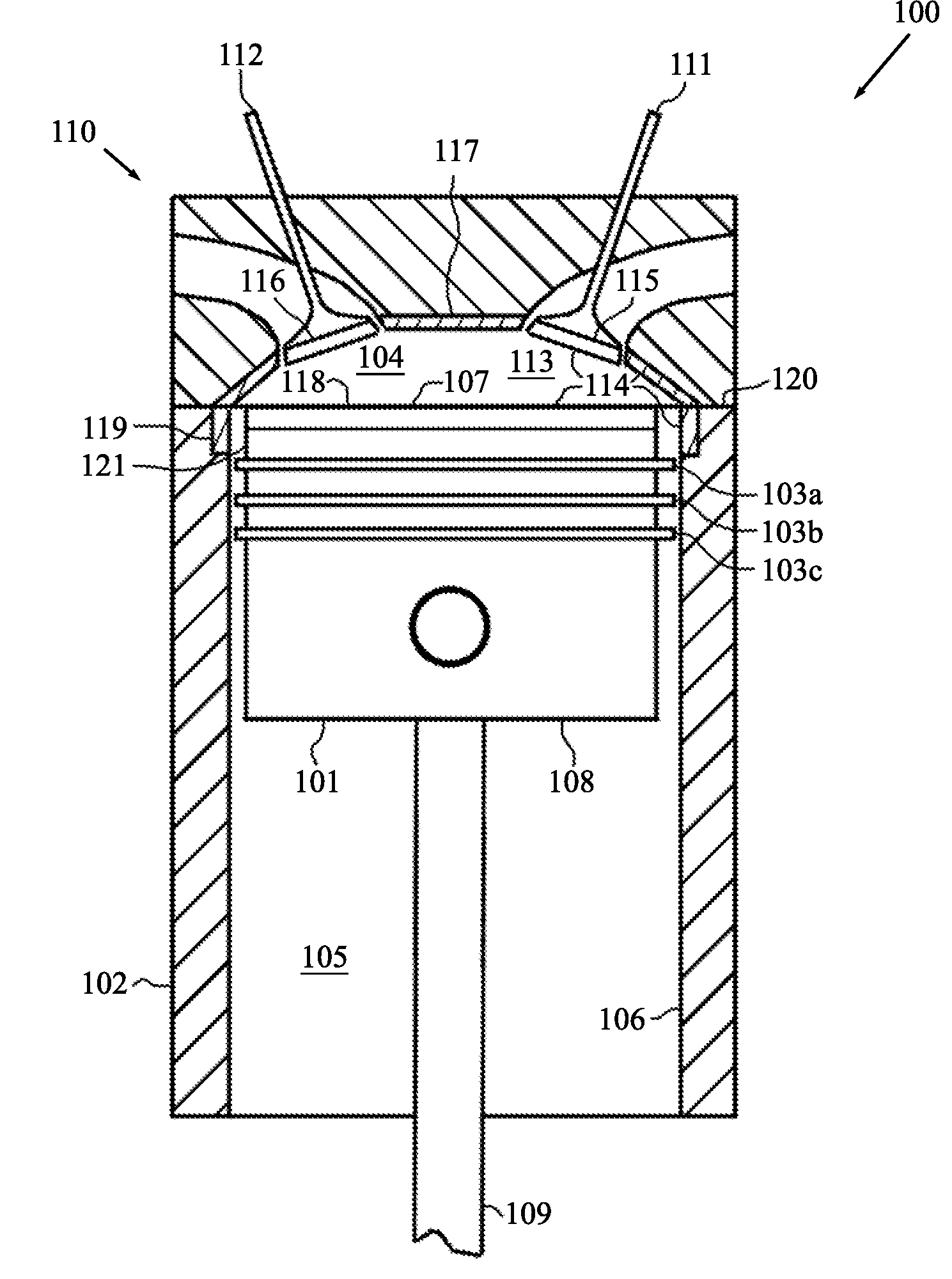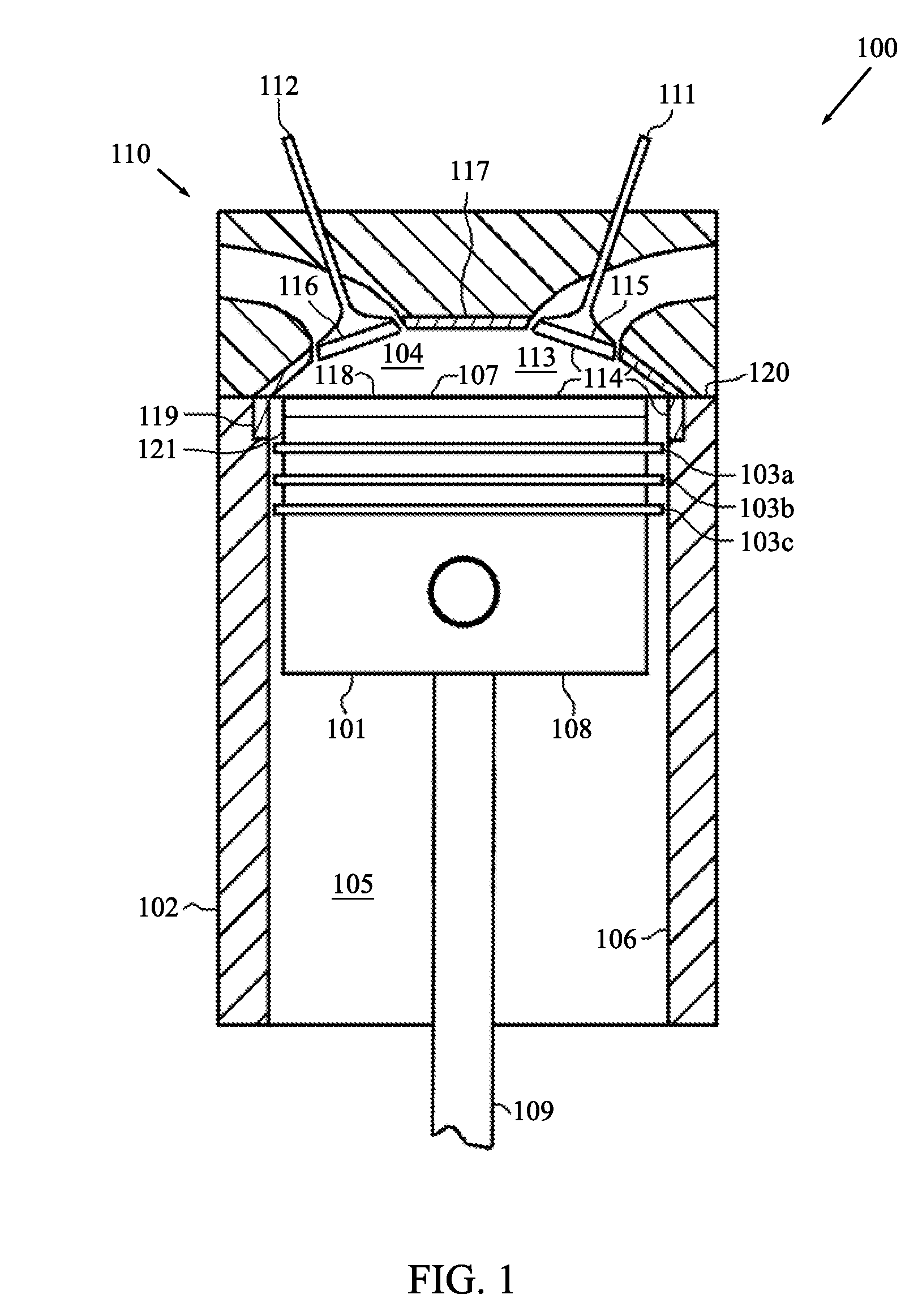Low heat rejection high efficiency internal combustion engine
a high-efficiency, internal combustion engine technology, applied in the direction of machines/engines, mechanical equipment, coatings, etc., can solve the problems of unsuitability, unsuitability, and low amount of energy stored in the insulation material, and achieve the effect of low heat rejection rate, less heat loss, and high efficiency
- Summary
- Abstract
- Description
- Claims
- Application Information
AI Technical Summary
Benefits of technology
Problems solved by technology
Method used
Image
Examples
Embodiment Construction
[0028]FIG. 1 is a cross-sectional schematic diagram of a portion of an ICE 100. The portion 100 includes a piston 101 disposed in a cylinder 102. The ICE 100 may contain additional similarly configured pistons and cylinders. A set of piston rings 103a, 103b, and 103c is interconnected to the piston 101. The set of piston rings 103a, 103b, and 103c restricts the flow of material (e.g., combustion gases) between a volume 104 above the piston rings 103a, 103b, and 103c and a volume 105 below the piston rings 103a, 103b, and 103c. The piston rings 103a, 103b, and 103c also remain in contact with the cylinder wall 106 and help to minimize contact between the piston 101 and the cylinder wall 106. In this regard, it is beneficial to situate the uppermost piston ring 103a closer to the top 107 of the piston 101 then to the bottom 108 of the piston 101. In this manner, the piston rings 103a, 103b, and 103c assist in keeping the piston 101 aligned with in the cylinder 102 and prevent the top ...
PUM
| Property | Measurement | Unit |
|---|---|---|
| thickness | aaaaa | aaaaa |
| thermal conductivity | aaaaa | aaaaa |
| operating temperature | aaaaa | aaaaa |
Abstract
Description
Claims
Application Information
 Login to View More
Login to View More - R&D
- Intellectual Property
- Life Sciences
- Materials
- Tech Scout
- Unparalleled Data Quality
- Higher Quality Content
- 60% Fewer Hallucinations
Browse by: Latest US Patents, China's latest patents, Technical Efficacy Thesaurus, Application Domain, Technology Topic, Popular Technical Reports.
© 2025 PatSnap. All rights reserved.Legal|Privacy policy|Modern Slavery Act Transparency Statement|Sitemap|About US| Contact US: help@patsnap.com



